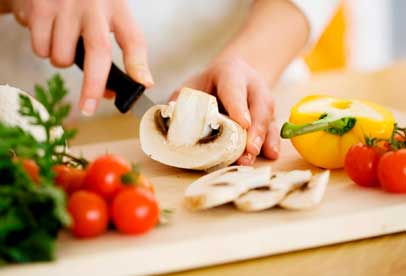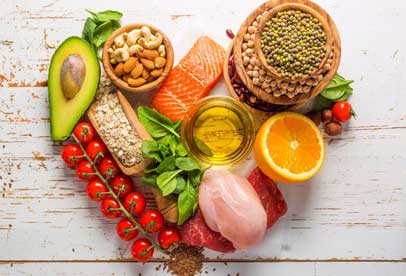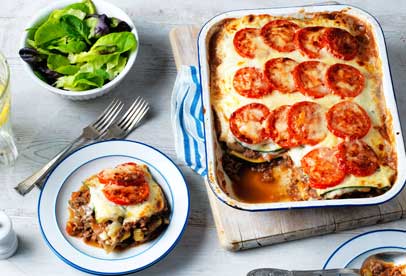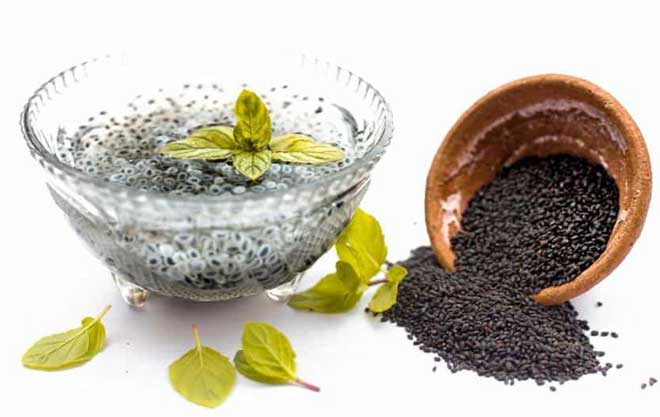
How mood and eating behaviour are connected
While fear and aggression tend to curb our appetite, sadness and frustration seem to stimulate it. A project funded by the Austrian Science Fund FWF looks into the connections between mood and overeating in healthy and bulimic individuals.
We know how it feels to look forward to our favourite dish; we are familiar with the notions of comfort food and feeling butterflies in the stomach instead of hunger. In eating disorders such as anorexia, bulimia or binge eating, food and emotions become entangled in a health-threatening way. Apart from creating problems for the affected individual ? from unhealthy diets to excess weight and social isolation ? eating disorders are also a massive burden on the public health system.
Snack bars instead of hunting mammoths
The human body was perfectly adapted to life as a hunter-gatherer during the Palaeolithic Age, when food was scarce. Today, that same body exists in a society which offers high-calorie meals within easy reach. Thanks to well-stocked kitchen cabinets, fridges and sandwich bars, snacks are available around the clock. This easy availability challenges our self-restraint. Although it has been established that emotional eating is more often found in overweight individuals, little is known about how regulation processes really work when it comes to food intake.
The FWF-funded project "Emo Eat" conducted at the Department of Psychology, University of Salzburg, intends to explore the connections between mood and unhealthy eating behaviour. In co-operation with the University of Luxembourg, the researchers are currently comparing healthy and bulimic women. The study participants are exclusively women, since they are the gender predominantly affected by eating disorders. In order to work out the commonalities between restrained and emotional eating, the project team uses a combination of learning theories, lab experiments and an eating diary app. "We focus on food intake not driven by hunger. We want to work out the connection between emotions and eating that takes the form of an enhanced appetite for easily available comfort food," explains principal investigator Jens Blechert.
Regulating emotions through eating
The FWF project examines the results of a prior online survey at the University of Salzburg′s "Eating Behaviour Laboratory". In response to this survey, the majority of women reported that they ate more than usual when they were sad. The investigation also revealed that the respondents ate less than normal when in a state of anxiety or anger. When happy, they eat the usual amounts. The physiological aspects involved in the interaction between anxiety or aggression have been well researched. The release of the stress hormone cortisol prepares the human body for a flight or fight response. In both situations, the feeling of hunger is suppressed.
How mood and eating behaviour are connected
The left-most bar from an online questionnaire filled in by 287 participants piqued the research team?s interest: what is the connection between sadness and overeating? Credit: Jens Blechert
But what about comfort or frustration eating? Sadness does not entail a threat. Jens Blechert thinks that this case probably involves psychological mechanisms and acquired behaviour. Eating binges are almost always accompanied and triggered by emotions, which is why one well-proven treatment for eating disorders is the analysis of situations that prompt overeating and the search for alternative, healthier ways of self-gratification (social contacts, for instance). By working out the commonalities between healthy and bulimic eaters, the scientist hopes to pave the way for more refined interventions.
The international team in Salzburg and Luxembourg intends to explore comfort eating in a two-stage investigative process. In preparation, healthy study participants are categorised into sub-types: highly emotional eaters, unemotional eaters and a median group. 30 students have already been recruited, but the sample will be extended by 30 more women of different ages, educational and social backgrounds.
The first step is a ten-day survey with a digital food and mood diary. "With our ′Psy-Diary App′ we give the study participants a practical tool for reporting emotionally charged situations and abnormal eating behaviour," explains Jens Blechert. The smart-phone app was developed at the University of Salzburg in co-operation with the Salzburg University of Applied Sciences (FH Salzburg). An alarm feature on their smart phones is designed to motivate participants to respond. "It takes only two minutes, which is why 90% of the entries are filed promptly and carefully," is how the head of the "Eating Behaviour Laboratory" describes his experience.
Based on the data provided by the app, the participants are divided into emotional and non-emotional eaters. The scientists then compare the two groups by measuring electrical activity in the brain: the women are asked to recall negative stressful situations over the past week under controlled conditions. The situations they report most often, by the way, are social interactions, for instance quarrelling with their boyfriend on Skype. The negative stress is often accompanied by sadness. After the mood stimulus, electroencephalography (EEG) records which brain regions are activated in reaction to images of tasty snacks. This enables the researchers to draw conclusions about the mechanisms involved in emotional eating.
Which brain region responds to visual stimuli?
Through this controlled laboratory set-up, the researchers investigate how the images of food are processed while under the impression of a sad memory. Do the snacks get more or less attention? Or do the women repress their attention for fear of losing control? And where in the brain can reactions to the images be measured?
"We know that emotion regulation occurs in the frontal lobe. When someone is simply looking at food images we would expect brain activity in the visual cortex or in the reward centre. In case of emotion regulation through eating, we would expect the frontal lobes to direct attention to the images if the mood is negative," notes Jens Blechert. This would also provide a therapeutic approach: namely shifting attention away to alternatives.
Related News

15 Best Heart-Healthy Foods

The Diabetes Diet

Study reveals alarming dangers of anti-ageing jabs

10 Healthy Twists on Classic Diner Dishes

Using Kalonji Seeds for Weight Loss

Looking towards India for design

A platter full of seafood

5 most surprising cosmetic surgery trends across the globe
Most Read
★Why and how exercises reduce the risk of CANCER?
★Is This the Best Diet for Post-Menopausal Women?
★5 Tips to Take Care of Your Sensitive Skin
★Work stress may lead to irregular heart rate
★10 Weight Loss Tips to Make Things Easier (and Faster)
★Red Heart Tea Recipe
★The Beauty Benefits of Exercise
★Fasting might be good for your healh, research says
★Top Foods for Calcium and Vitamin D
★Cooking in aluminium pans may be dangerous for your health
★12 Real Amazing Benefits Of Skipping For Weight Loss
★Plum goodness for your hair!
★5 Skincare resolutions for 2019 that you must keep
★7 Must-Eat Fermented Foods for a Healthy Gut
★Take care of your coloured hair with Wella
★Sari saga from Bengal
★10 Natural beauty tips for face you must try
★Numerous health benefits of bitter melon (uses , side effects)
★Why You Probably Shouldnt Take Diet Advice from Your CrossFit Coach
★Whole-body vibration may be as effective as regular exercise
★Could laser hair removal give you CANCER?
★Top Natural Body Care Tips for Women
★Those who consume fruit and vegetables have a 40% lower risk of an incurable lung disease
★Cancer warning over skin bleaching treatment
★Top 10 Fruits To Eat To Lose Weight Quickly
★Natural Herbal Gummies
★The amazing and healthy benefits of meditation!
★10 questions about laser hair removal
★Fruitylicious cure for ageing skin
★5 most surprising cosmetic surgery trends across the globe
★Weight-lifting and protein shakes rich in growth hormones may make you bald
★The Benefits of Yoga Beyond Flexibility
★What dangers are hidden in your pillow?
★Five-second rule for food dropped on the floor approved by germ scientists
★15 Best Heart-Healthy Foods
★Five foods that can cause problems if consumed on an empty stomach!
★Face Open Pores
★Can high heels give you cancer?
★Face Scrubs and Face Packs
★Vitamin reverses aging in organs and muscles
★How your make-up bag could wreck your health
★Surgery addict rushed to hospital after his body REJECTED his new nose
★The health benefits of popular foods
★How to exercise outdoors, when the smogs a killer
★9 Food Habits To Keep Eating To Lose Weight
★15 Kitchen Herbs and Spices with Powerful Health Benefits
★Daylight Savings Time: That miserable time of year when many mourn loss of one-hour sleep
★Ways to Use Honey for a Glowing Skin
★The Diabetes Diet
★Recycling temple waste along the Ganges with Help Us Green
